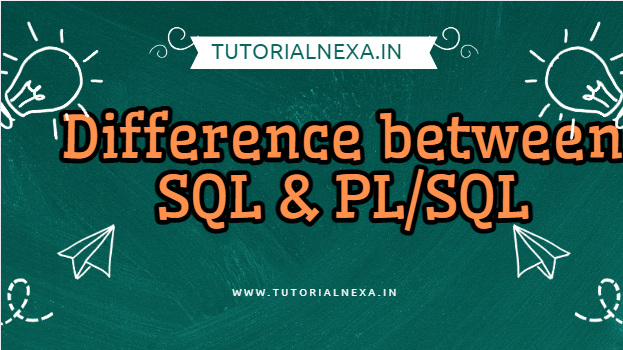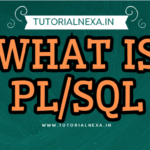Difference Between SQL and PL/SQL
SQL and PL/SQL are two essential components of database management. They may sound similar, but they serve different purposes and have distinct characteristics. Let’s explore the key differences between SQL and PL/SQL in simple terms.

SQL (Structured Query Language)
1. SQL Stands For
- SQL stands for “Structured Query Language.”
2. Purpose
- SQL is used for querying, manipulating, and managing data in relational databases.
3. Nature
- SQL is a declarative language, meaning you specify what you want to do, and the database engine figures out how to do it.
4. Operations
- SQL primarily performs operations like SELECT, INSERT, UPDATE, DELETE, and other data retrieval and modification tasks.
5. Use Cases
- SQL is suitable for one-time database operations, simple queries, and reporting.
6. Code Complexity
- SQL statements are typically short and straightforward.
7. Language Type
- SQL is a data manipulation language (DML).
8. Example
- A simple SQL query might be: “SELECT * FROM Customers WHERE City = ‘New York’.”
9. Standalone
- SQL can be used independently without any procedural code.
10. Supported by – Various relational database management systems like MySQL, PostgreSQL, Oracle, Microsoft SQL Server, etc.
PL/SQL (Procedural Language/SQL)
1. PL/SQL Stands For
- PL/SQL stands for “Procedural Language/SQL.”
2. Purpose
- PL/SQL is used for writing procedural code to control the flow of a program within a database.
3. Nature
- PL/SQL is a procedural language, which means you specify the steps to achieve a particular task.
4. Operations
- PL/SQL can perform SQL operations and also includes conditional statements, loops, and exception handling.
5. Use Cases
- PL/SQL is suitable for developing complex business logic, triggers, stored procedures, and functions.
6. Code Complexity
- PL/SQL code can be highly complex, with multiple procedural elements.
7. Language Type
- PL/SQL is a combination of SQL and procedural constructs.
8. Example
- A PL/SQL block might include an SQL query along with conditional statements like IF-ELSE.
9. Standalone
- PL/SQL is typically used within the context of a program or application to control the database operations.
10. Supported by – Oracle Database, as PL/SQL is specific to Oracle and closely integrated with it.
Summary in Table Format
Here’s a summary of the key differences between SQL and PL/SQL in a table format:
| Aspect | SQL | PL/SQL |
|---|---|---|
| Stands For | Structured Query Language | Procedural Language/SQL |
| Purpose | Data querying and manipulation | Procedural code within a database |
| Nature | Declarative | Procedural |
| Operations | Data retrieval and modification | Includes SQL operations and procedural constructs |
| Use Cases | Simple queries, data retrieval, reporting | Complex business logic, triggers, stored procedures, and functions |
| Code Complexity | Typically short and simple | Can be highly complex with procedural elements |
| Language Type | Data Manipulation Language (DML) | Combination of SQL and procedural constructs |
| Example | “SELECT * FROM Customers WHERE City = ‘New York’.” | PL/SQL block with SQL queries and procedural logic |
| Standalone | Can be used independently | Used within the context of a program or application |
| Supported by | Various RDBMS (e.g., MySQL, PostgreSQL, Oracle, SQL Server) | Oracle Database |
In conclusion, SQL and PL/SQL serve different purposes in the world of database management. SQL is primarily used for data querying and manipulation, while PL/SQL is used for writing procedural code within a database. Understanding the distinction between these two languages is crucial when working with relational databases, as it helps determine the appropriate tool for the task at hand.

